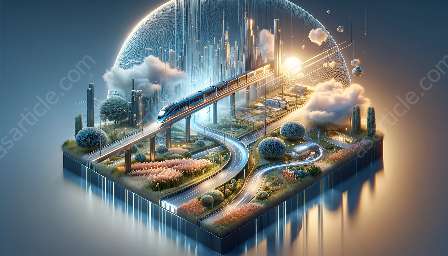The field of railway systems engineering plays a crucial role in the transportation and applied sciences, connecting various disciplines to ensure the efficient and safe operation of railway networks. This topic cluster provides a comprehensive exploration of railway systems engineering, covering its principles, technological advancements, and impact on transportation systems and applied sciences. From the design and construction of railway infrastructure to the management of train operations and maintenance, this cluster delves into the intricate world of railway engineering, offering insights into its challenges, innovations, and future prospects.
The Fundamentals of Railway Systems Engineering
Railway systems engineering encompasses the design, construction, operation, and maintenance of railway infrastructure and rolling stock. It combines elements of civil, mechanical, electrical, and computer engineering to create a comprehensive network that facilitates the movement of passengers and freight. The fundamental principles of railway systems engineering include:
- Track and Infrastructure Design: The layout and construction of track systems, including rails, sleepers, ballast, and earthworks, are essential components of railway engineering. Factors such as alignment, gradient, and curvature influence the overall performance and safety of the railway network.
- Signaling and Control Systems: Ensuring the safe and efficient operation of trains requires sophisticated signaling and control systems. From traditional block signaling to modern computer-based interlocking systems, railway engineers are responsible for implementing advanced technologies to manage train movements and maintain operational safety.
- Traction and Rolling Stock: The design and maintenance of locomotives, passenger coaches, and freight wagons are critical aspects of railway systems engineering. Engineers focus on optimizing energy efficiency, performance, and passenger comfort while adhering to regulatory standards and safety protocols.
Integration with Transportation Sciences
Railway systems engineering is intricately linked with transportation sciences, as it seeks to optimize the movement of people and goods within the broader transportation network. From a multidisciplinary perspective, the integration of railway engineering with transportation sciences involves:
- Modal Interactions: Studying the interactions between railways, roads, waterways, and air transportation systems to develop integrated transport solutions that maximize efficiency and sustainability.
- Network Planning and Optimization: Utilizing transportation modeling and simulation techniques to design and optimize railway networks, improve train scheduling, and enhance the overall performance of the transportation system.
- Transportation Policy and Governance: Addressing regulatory and policy frameworks that govern railway operations, safety standards, environmental impact, and public transportation initiatives.
Advancements in Railway Technology
As technology continues to advance, railway systems engineering benefits from ongoing innovations that enhance safety, efficiency, and sustainability within the industry. Key areas of technological advancement include:
- High-Speed Rail: The development of high-speed rail networks has revolutionized long-distance travel, offering rapid and sustainable transportation options that compete with traditional modes of travel such as air transportation.
- Automation and Remote Monitoring: Implementing advanced control systems, predictive maintenance technologies, and remote monitoring capabilities to improve the reliability and safety of railway operations.
- Energy-Efficient Propulsion Systems: Exploring alternative propulsion technologies, such as electrification and battery-powered trains, to reduce carbon emissions and energy consumption in railway operations.
Challenges and Future Prospects
Despite its significant contributions to transportation and applied sciences, railway systems engineering faces several challenges and opportunities for the future. Key considerations include:
- Aging Infrastructure: Many railway networks are grappling with aging infrastructure, requiring extensive maintenance and modernization efforts to ensure continued operational reliability and safety.
- Environmental Impact: Addressing the environmental impact of railway operations, including emissions reduction, noise pollution mitigation, and sustainable infrastructure development.
- Modal Shift and Multimodal Integration: Adapting to changing transportation trends and integrating railway systems with emerging transportation modes to create seamless, multimodal transport networks.
- Next-Generation Connectivity: Embracing digitalization, IoT integration, and data-driven decision-making to transform railway systems into smart, interconnected transportation networks.
Through its interdisciplinary connection with transportation sciences and applied sciences, railway systems engineering continues to evolve, driven by the pursuit of safer, more efficient, and sustainable transportation solutions. The collaborative efforts of engineers, researchers, and policymakers are essential in shaping the future of railway technology and its impact on society and the environment.

